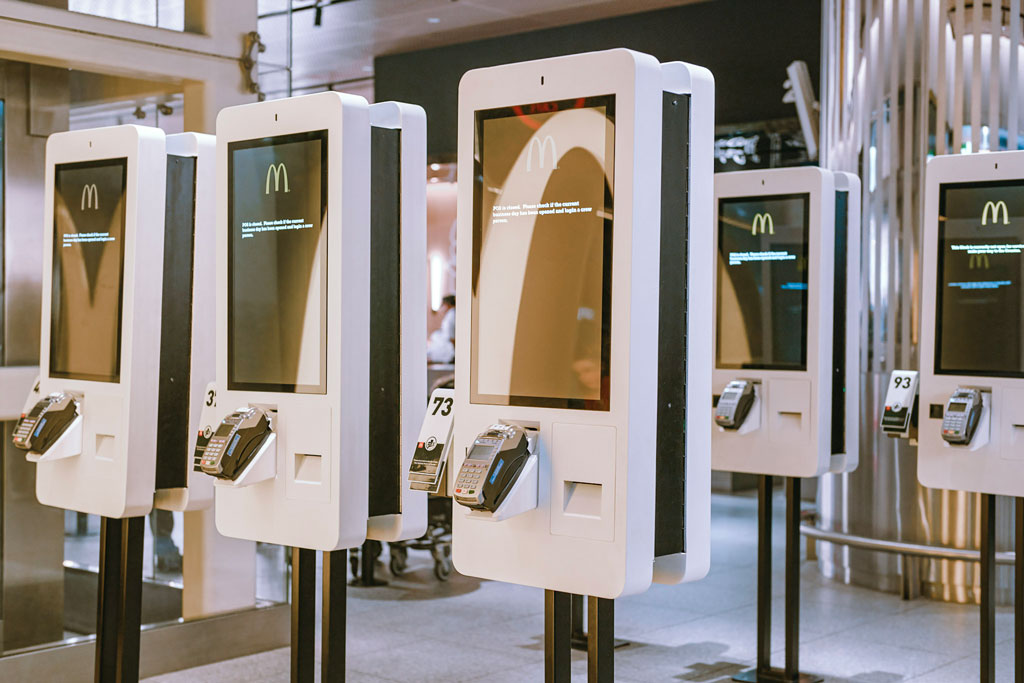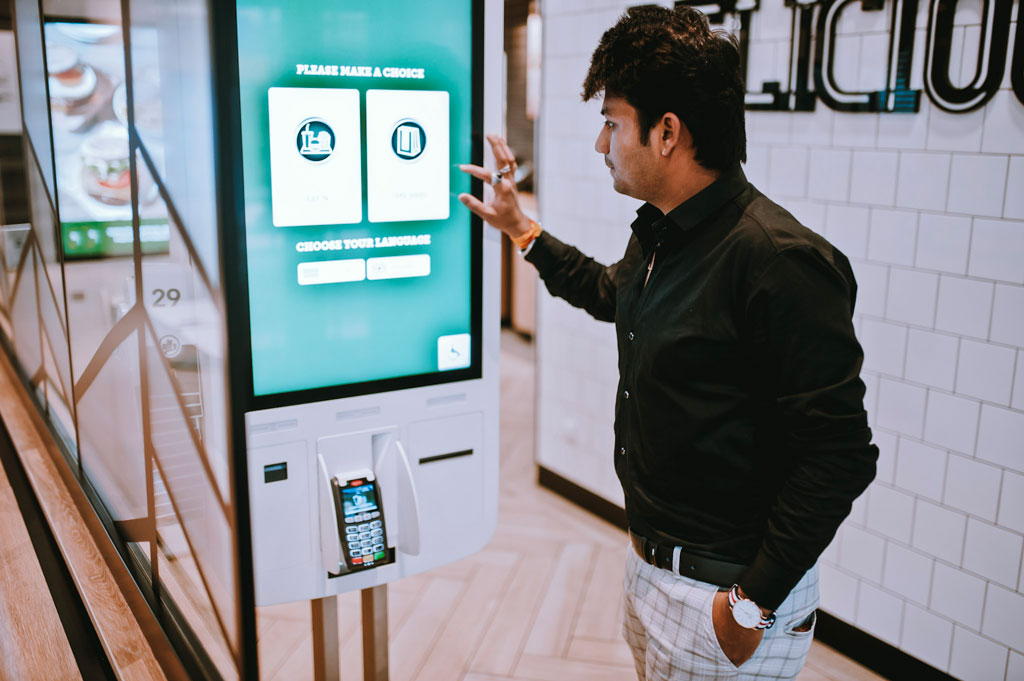Many restaurants and fast-food establishments alike have made moves to incorporate self-service kiosks into their business model. While only a fraction of restaurants actually use the technology, it’s becoming more popular thanks to the expanding repertoire of services kiosks can perform. Early adopters like McDonald’s kiosks and Wawa have built their entire brand around self-service kiosks, while late bloomers like Wendy’s have only recently deployed them. Despite some chains and upscale eateries having little intention of introducing the technology, most have at least deliberated on making the switch.
In light of kiosks’ popularity among millennials, many foodservice brands are putting a creative twist on them. Here are four examples.
1. Chili’s Has Retained A Critical Demographic
Anyone who has been to a Chili’s in the past five years has almost certainly seen the chain’s self-service kiosks and already knows that they are capable of a lot more than placing an order. In 2013, Chili’s began its rollout of Ziosks to every table at every Chili’s location, with over 45,000 tablets in all. Though it was by no means an overnight process, it wasn’t long before Chili’s had rebranded itself as the sit-down restaurant that had tablets. Besides the self-ordering aspect, the apps available on the tablets also make dining at Chili’s a unique experience, and no company had done a complete implementation in this manner before, or at this scale.
It’s unclear if the Ziosks have had a major impact on Chili’s overall profitability. However, compared to competitors like Applebee’s, Buffalo Wild Wings, and Ruby Tuesday’s, Chili’s has not experienced the same decline in revenue as these other chains. One explanation has been that millennials don’t partake in casual dining as often, and missing that demographic has hurt these chains. Given that nearly half of millennials prefer to use kiosks, Chili’s making the switch has been a very smart play to appeal to a slipping demographic.
2. McDonald’s Kiosks Capitalize On The Internet-of-Things
McDonald’s has been lagging behind its competition in recent years in terms of innovation, but it has begun to take new strides by pushing kiosks to over six hundred locations. This upgrade from its “digital menu” follows suit in a dynamic display. The technology is capable of telling what the weather is like outside, and can make suggestions based on temperature and the likelihood of rain. As expected, the technology also pushes certain menu items based on time of day. Breakfast foods and desserts get special treatment when it’s very late at night or very early in the morning.
The kiosks have a leg up on digital menus, however, as well as other fast-food kiosks. McDonald’s now offers table service in locations with kiosks, delivering food to the table that was ordered on the machine. Nearly every customer also customizes his or her order, and the personalized display offers a calorie count for the entire meal. This kind of thinking is helping McDonald’s keep up with the consumer demand for healthier choices. With these kiosks, McDonald’s is able to better adapt to changing fast food industry.
3. Subway Is Trying to Eliminate Lines Altogether
Facing another massive closure of stores, Subway is doing everything it can to remain relevant in this competitive space. The latest rebranding effort from Subway has been in the works for over a year, and at its core are self-order kiosks. Vice President Trevor Haynes has emphasized that the kiosks are not simply to make the process easier and faster, it’s to make it instantaneous. Customers “will never have to wait in line,” thanks to the kiosks sending information about the order to the employees as the details are being placed. Similarly, Subway offers a bot on Facebook Messenger that will function similarly.
Another component of the self-service kiosks is to make Subway locations less congested. With the elimination of lines, kiosks are also generally placed in together in one place, away from the window where food is prepared. This change is in part to help manage space, which has been an issue in Subway locations in the past. By grouping the kiosks this way, the counter is only used for food pickup, reducing foot traffic, lines, and congestion. The kiosks are also a part of a greater integrated system, with USB ports for charging mobile devices and free Wi-Fi.
This is a great system developed and built by Olea Kiosk, which manufactures Subway’s exciting new interactive ordering system for its drive-thru initiative.
4. Several Restaurants Have Kiosks That Remember Your Face
The next time you’re asked if you want “the usual,” it might come from a kiosk, not your favorite server. Several restaurants across the United States are now using facial recognition technology. The pioneers of this technology have been individual locations: Malibu Poke in Dallas, TX; Caliburger in Pasadena, CA; and UFood Grill in Ownings Mills, MD. All three have introduced the technology that reduces ordering time to around 10 seconds, as the face-scanning machines are able to remember what you last ordered and charge you appropriately.
Though it’s come under some scrutiny for security reasons, there’s a strong possibility that it will end up becoming the norm. The developer of the kiosk’s face-scanning tech, Nextep, has already said it wants to push its product into coffee shops and drive-thrus. The allure is hard to resist. The ease of being able to get their coffee the exact way they want, or not having to say a word after rolling down the window in the drive-thru, would be enough for many to take part. In fact, if the success of UFood Grill, Malibu Poke, and Caliburger are any indication, customers apparently already enjoy the convenience.
It’s fairly evident that kiosks in restaurants are limited to simply being devices for ordering. They can be powerful tools to lower waits in line, adapt to a fast-paced industry, save money, and even pioneer new technology. Even with mobile phone apps and integration, kiosks still provide a variety of benefits to customers, as well as helping curb costs in an already steep budget. Kiosks are only really limited by the innovative ability of the business implementing them.
Customize Fast-Food Kiosks with Worldlink
Deploying kiosks is a lot easier said than done. That’s why at Worldlink Integration Group, our team works with you to develop a customized solution for your goals. You have enough to worry about; so we make it our business to handle the stress and day-to-day management involved in implementing tech in multiple locations. Find out more today by calling us or sending us a message today!

